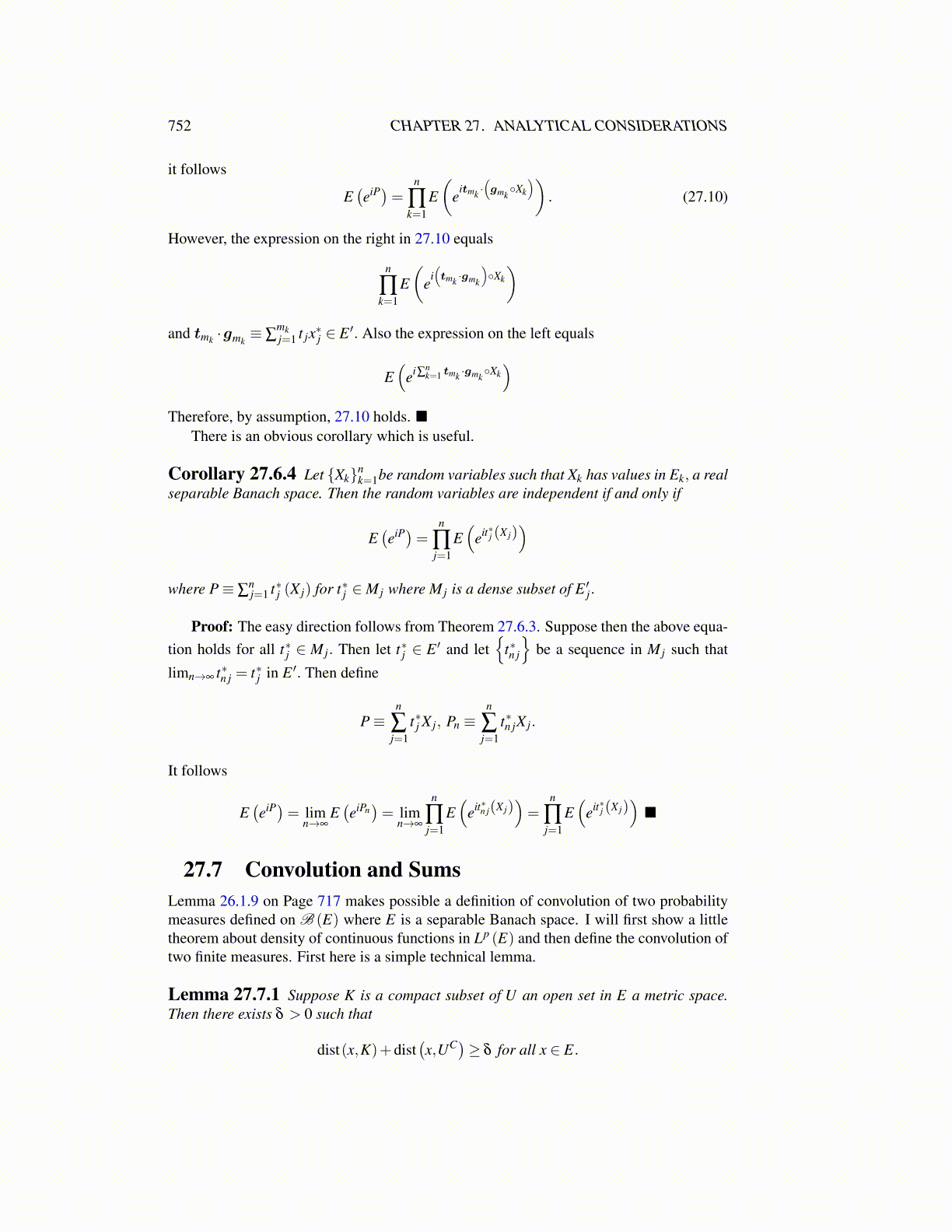
752 CHAPTER 27. ANALYTICAL CONSIDERATIONS
it follows
E(eiP)= n
∏k=1
E(
eitmk ·(gmk◦Xk
)). (27.10)
However, the expression on the right in 27.10 equals
n
∏k=1
E(
ei(tmk ·gmk
)◦Xk
)and tmk ·gmk
≡ ∑mkj=1 t jx∗j ∈ E ′. Also the expression on the left equals
E(
ei∑nk=1 tmk ·gmk
◦Xk)
Therefore, by assumption, 27.10 holds. ■There is an obvious corollary which is useful.
Corollary 27.6.4 Let {Xk}nk=1be random variables such that Xk has values in Ek, a real
separable Banach space. Then the random variables are independent if and only if
E(eiP)= n
∏j=1
E(
eit∗j (X j))
where P≡ ∑nj=1 t∗j (X j) for t∗j ∈M j where M j is a dense subset of E ′j.
Proof: The easy direction follows from Theorem 27.6.3. Suppose then the above equa-tion holds for all t∗j ∈ M j. Then let t∗j ∈ E ′ and let
{t∗n j
}be a sequence in M j such that
limn→∞ t∗n j = t∗j in E ′. Then define
P≡n
∑j=1
t∗j X j, Pn ≡n
∑j=1
t∗n jX j.
It follows
E(eiP)= lim
n→∞E(eiPn)= lim
n→∞
n
∏j=1
E(
eit∗n j(X j))=
n
∏j=1
E(
eit∗j (X j))■
27.7 Convolution and SumsLemma 26.1.9 on Page 717 makes possible a definition of convolution of two probabilitymeasures defined on B (E) where E is a separable Banach space. I will first show a littletheorem about density of continuous functions in Lp (E) and then define the convolution oftwo finite measures. First here is a simple technical lemma.
Lemma 27.7.1 Suppose K is a compact subset of U an open set in E a metric space.Then there exists δ > 0 such that
dist(x,K)+dist(x,UC)≥ δ for all x ∈ E.